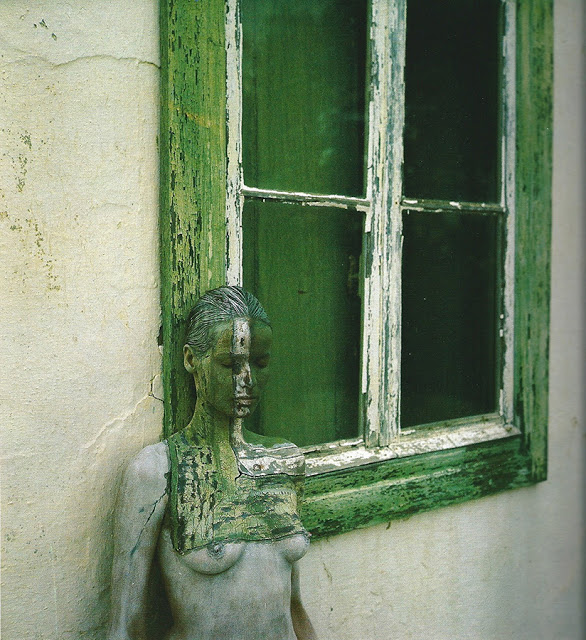Veruschka von Lehndorff was born on 14 May 1939 in Königsberg, East Prussia to Countess Gottliebe von Kalnein: her father was German Count von Lehndorff-Steinort, an army reserve officer executed when she was 5 for attempting to assassinate Adolf Hitler in the July 20 plot. After his death the remaining family members were interned in labor camps until the end of World War II: Veruschka later studied art in Hamburg and was discovered by the photographer Ugo Mulas at age 20, after which she became a full-time model.
In 1966 she did her first shoot wearing body paint, and it became a lifelong artistic pursuit. Most of the time she did her own make-up, hair and styling.
“The most successful ones were done like that, because I was in charge of it,” she says. “With the photographer we created the whole thing on the spot. We cut up the clothes even, if it looked better.”
A trip to Kenya with photographers Andy Warhol and Peter beard in 1970 was the start of her actual career in body painting: it was there that she first painted herself in black shoe polish to obscure her identity and photographed herself posed in the natural environment. Her aim was to try and blend into the environment as a foreign plant or animal.
While the work was often published and exhibited, it failed to gain a serious hold, possibly because of her “super model” status. But in 1985 Veruschka finally infiltrated the New York art scene, putting on a body-painting show in Tribeca. She worked with the photographer Holger Trulzsch, a former lover she first collaborated with in the early 1970s. They conceptualised Veruschka’s time in fashion by painting outfits on her and transforming her into wild animals and archetypes such as film stars, dandies, gangsters and dirty old men. (She tells me she’s often mistaken for a man, that in France they often say, ‘Oui, monsieur.’)
In the past three decades Veruschka has returned to the fashion world occasionally, including a trip to Australia in 2000 as a guest model at the Melbourne Fashion Festival.
A book of her work, Trans-Figurations was published by the New York Graphic Society, Boston, in 1986.
“When I was young I used to spend a lot of time in the woods behind my house, hiding among the trees and pretending I was one.”

































